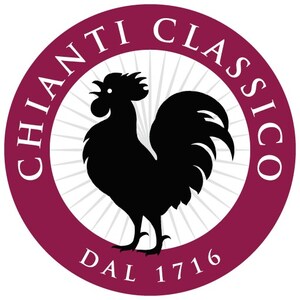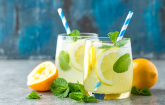
Chianti Classico's new sustainability protocol sets 58 standards. A recent survey reveals how wineries are meeting them.
FLORENCE, Italy, Oct. 7, 2025 /PRNewswire/ -- In Chianti Classico, sustainability has long been a central focus. A recent survey reinforced this commitment, with 48% of member companies, representing the entire production chain from vineyard to bottle and covering 53% of the region's production area, reporting active engagement on the topic. The data highlights that sustainability in Chianti Classico is not a passing trend, but a long-standing priority.
The denomination currently focuses on three important elements of sustainability: environmental, social, and cultural, reflecting the three cornerstones of the new Chianti Classico Protocol for sustainability, which was presented on May 14th during the Consorzio's centenary celebrations.
As with producing quality wine, everything begins in the vineyard. Today, two-thirds of Chianti Classico wineries already practice grassing between rows, a key measure to combat soil erosion and soil depletion. Three out of four estates are actively working to preserve the vineyard's natural ecosystem by reducing the use of herbicides and chemical fertilizers, instead favoring natural compost or by-products from the winemaking process. In roughly one out of every three estates, covering 27% of the hectares surveyed, melliferous plants have been introduced to support pollinators. These pollinators are a delicate but vital link in ecological balance: they enable plant reproduction and serve as important biological indicators for environmental health. This commitment extends to organic farming as well, with 61% of estates already certified organic and another 9% currently in conversion.
Even during the production phase, environmental awareness can be influential. Almost half of the estates use alternative energy sources (45%), are committed to reducing bottle weights (65%), and are reusing materials such as glass and paper (54%).
Wine carries cultural significance, tradition, and history, linking it to its place of origin. As a point of union between nature and human intervention, the landscape is an essential part of the cultural element. The recovery and maintenance of ancient traditions such as dry-stone walls, terracing, and strade bianche (white roads) all represent an active and consistent commitment to protecting the land outside the confines of the vineyard. This is perceived as imperative, evidenced by the fact that 60% of member companies strongly agreed that sustainable wine is closely connected to the protection of biodiversity and the landscape.
This ties in with the concept of cultural sustainability, the innovative thread running through the Chianti Classico protocol. Chianti Classico's landscape is a mosaic of wild nature alternating with human intervention. Woodland prevails, covering two-thirds of the region, interspersed by vine and olive cultivation, as well as arable land. Additionally, the imprint of human presence, through buildings, gardens, and roads, reveals 600 years of rural Tuscan life. Maintenance and restoration of all this is carried out by almost all the estates.
Workers' welfare is a central part of sustainability in Chianti Classico, from promoting gender equality (39% of employees are women) and supporting a local workforce (92% live in the area, 73% in nearby towns) to creating pathways for social inclusion (37%). Additionally, the Consorzio recognizes that regions thrive when communities are socially connected and engaged, so their guidelines look at where people live to support growth in key local industries.
"Sustainability is a new lens through which we can look at our region – declares Carlotta Gori, the director of the Consorzio - Care and attention for the region is already at a high level, but like everyone, we can always do better. I believe that looking at our region with new eyes should be an area of focus for our protocol. Cultural sustainability has set us apart for centuries and is more relevant now than ever. We want to make it more evident to the consumer too, by using a dedicated symbol on the wine labels by certified producers."
About the Consorzio Vino Chianti Classico:
The Consorzio Vino Chianti Classico exists to protect, oversee, and valorize the Chianti Classico denomination. Since the Consortium's founding in 1924, the organization has changed its name and the design of its logo, the Black Rooster, which since 2005 has been the trademark of the whole denomination. As one of the premier institutional organizations in the European Union in the grape-growing and winemaking sector, the consortium represents 96 percent of the DOCG production. The entire production chain is supervised by a public tracking system, which enables consumers all over the world to check the bottle they've purchased via the Consortium's website. The Consortium also conducts research and development in the agronomic and enological fields, in collaboration with prestigious educational and research institutes. For more information, please visit www.chianticlassico.com.
Please note: The Consorzio counts on the professionalism of the press receiving this release and trusts that the term "Chianti Classico" will be neither changed nor abbreviated. Use of the term "Chianti" instead of "Chianti Classico" constitutes a major change in the information communicated here. The two terms represent two completely separate DOCGs with different terrains, histories and organisations. When an alternative to the term "Chianti Classico" is needed, we suggest using "Gallo Nero", our logo which is synonymous with the DOCG "Chianti Classico". Thank you for your understanding.
Media Contact
Shelby Sonkin
SOURCE Chianti Classico







Share this article